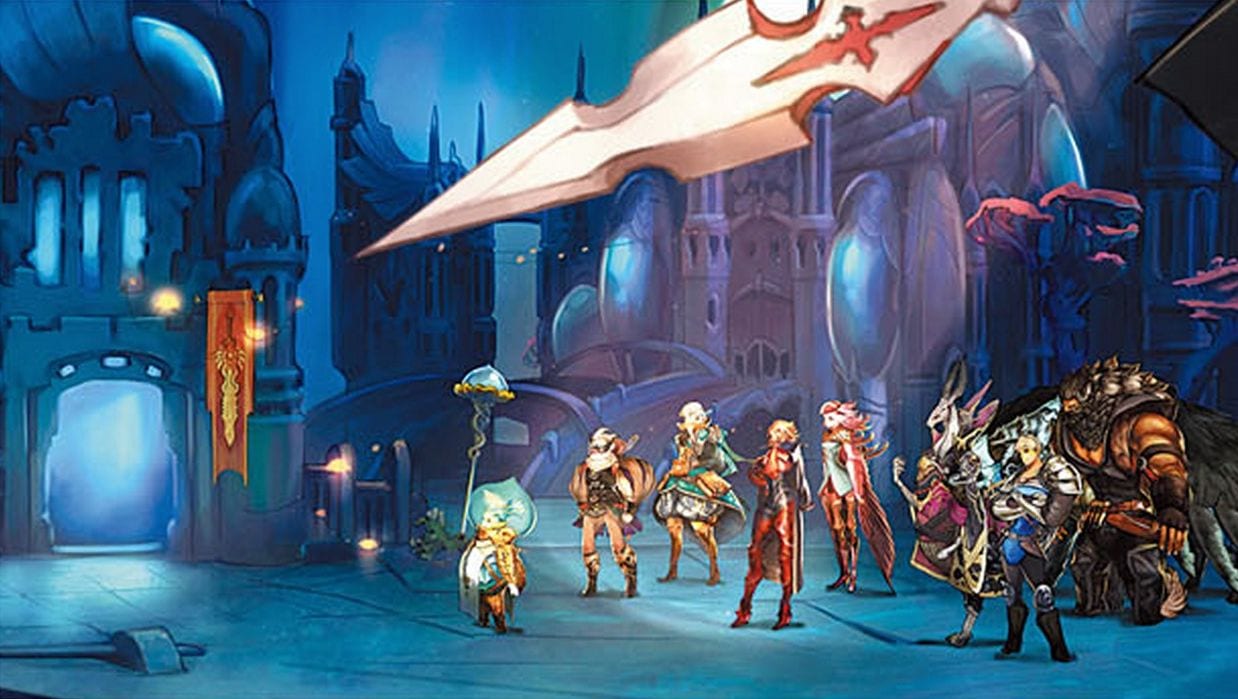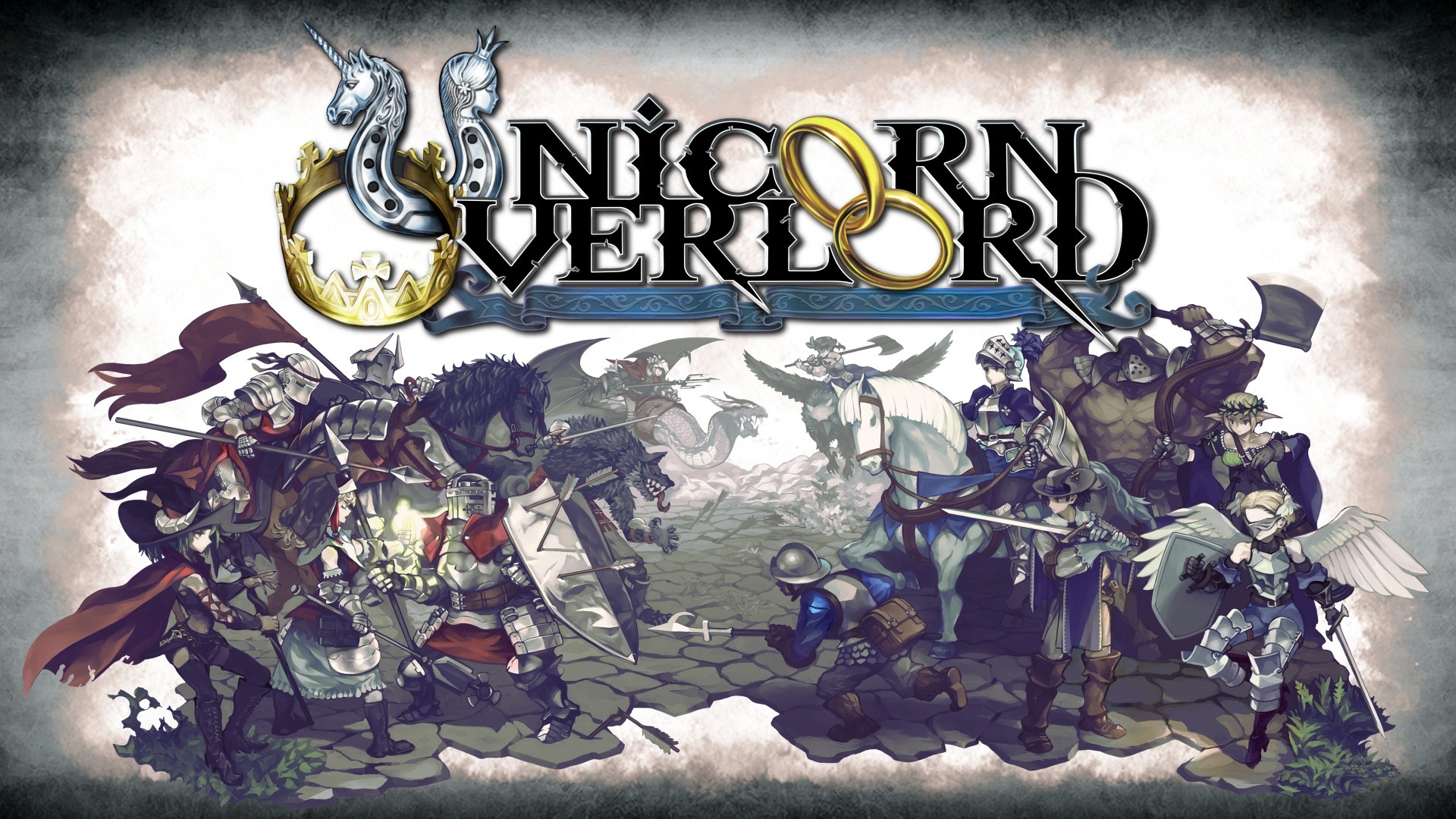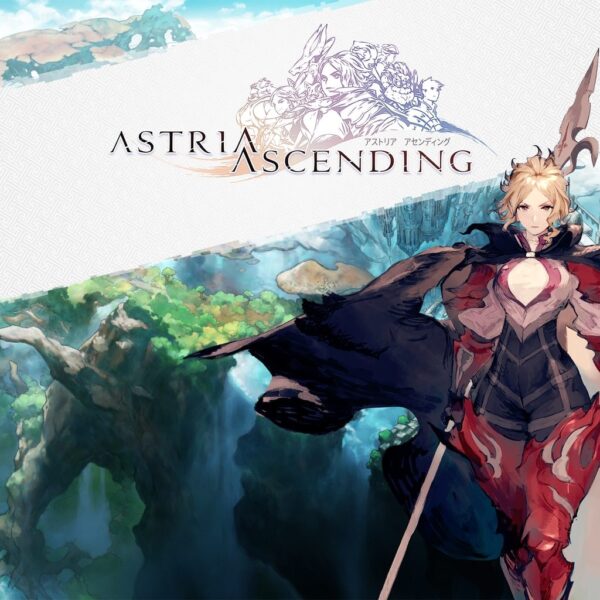
A return trip to a first voyage. Star Ocean: First Departure R.
March 7, 2023
Kirby’s Return to Dream Land Deluxe.
March 28, 2023Astria Ascending reached for the stars and sadly fell short.
I can’t remember the last time I was rooting for a game to be good since Astria Ascending. On paper, Astria Ascending has everything I could ask for. I remember thinking that this game was like the second coming of Valkyrie Profile after I got about an hour into it. It was around the midway point that things started to get redundant. There were still a few bright spots, but I was beyond ready for the game to end a few hours before the final moments. A lot of that was on me since I was determined to get 100% completion. But, more of it had to do with the game’s repetitive design that couldn’t withstand its approximately 40 hours of game time. This is a game only dedicated, experienced RPG fans will be able to fully tolerate.
Astria Ascending is a beautiful looking game that takes place in the world of Orcanon. It’s a massive world filled with wondrous locations, cultures, and dangers. It’s home to the following races: the Merios, the Peyskas, the Zeffs, the Arktans, and the Awisis. Lastly, there are the Migmies, adorable couriers that travel throughout Oracanon delivering a special fruit called Harmelon. Consuming Harmelon generates Harmony between the races that, normally, don’t care for one another. Players take control of the 333th group of demi-gods. Lead by Ulan, your team of demi-gods have been given superhuman powers to destroy monsters known as Noises. The tradeoff is that demi-gods are only given three years to live before the powers take too much of a toll on their bodies. Every area of Orcanon was lushly designed with so much texture and detail that you would think you were playing something from Vanilla Ware. Some of the character designs are kind of stiff and awkward, but overall the game is a real stunner. The presentation is a work of moving art.

From the start, you are given a party of eight. Your team of demi-gods come with their own base class. Along the way, they’ll have the opportunity to unlock main classes and sub-classes. I’ll talk more about that later, but being thrown into the game with a full party that already know each other was unique. The team of demi-gods were forced to work together. They don’t always see eye to eye. For instance, Eko (a Peyska) is usually at the receiving end of a joke. Arpajo and Alaessia (Merios) have been married for years before becoming demi-gods and have adorable marital squabbles. Ulan just wants everyone to get along and does the best she can to act as the leader. It’s a great crew that I enjoyed getting to know. There’s also a solid supporting cast. While the plot can be predictable, seeing the demi-gods work together and interact with everything in Orcanon is enjoyable. Really, the only downside with the story is that you’re unable to advance story-related text. Instead, it auto-advances. You’re stuck reading at the rate of everyone’s speech speed. The music is magnificent (Sakimoto always does the damn thing) but the voice acting is uninspired for the most part. This pertains to both English or Japanese options. Why can’t we advanced text at our own pace in a game that was released for modern consoles? This decision baffled me.
Like I said in the introduction, Astria Ascending sounds like it would be the ideal RPG on paper. Let me break it down. First, exploration is in 2D. Ulan can run and jump all around Orcanon’s fields and villages. One of the first key items she finds is called the Physical Ring. This lets her activate switches, as well as freeze the Noises. She can brandish her spear to possibly gain initiative in combat, too. Overtime, she’ll obtain rings of fire, water, earth and wind to assist with later puzzles. The four elemental rings will eventually get enhanced to add even more possibilities for puzzle solving and exploration. Getting excited? Just wait, there’s more. Remember how I said your party of eight has a bunch of classes? You customize them in their Ascension Charts; constellation inspired growth charts (think of the Sphere Grid from FFX) that slowly but surely unlocks new abilities and stat boosts. You’ll do this by spending Skill Points earned from combat. And of course, everyone can equip a variety of weapons, armor pieces, and accessories. Of which, there are MANY. Oh, and there are passive abilities, too.
Combat is turn-based, and again, sounds wonderful on paper. Four of your demi-gods can participate in combat. Each one has their own role to play. Ulan is a warrior/tank. Kaydin is a swift moving swordswoman that can debilitate her opponents. Dagmar is a sorcerer with access to a plethora of elemental magic. Battles are traditional in that you can attack, use items or skills, defend, run, or switch around party members. There’s also the Focus option, which builds Focus Points. Using FP will make attacks more powerful. You can also obtain FP by hitting an enemy with its weakness. There are also summons and Cosmo Breaks. Astria Ascending comes with four difficulty options in case you want to increase or decrease the challenge.

By now, you might be thinking what the problem is? All of this sounds like a dream for longtime RPG fans. Well, once again, let me break it down. The dungeon areas that Ulan and her team navigate are laid out horribly. While you have access to a map, it does a pisspoor job of helping you figure out where you actually are and where you can/can’t go. On top of being a pain to traverse, the later dungeons outstay their welcome. To get to some of them, you’re forced to play an unpleasant shoot ‘em up mini-game. Then, there’s combat. Initial encounters are manageable. Over time, it’s clear that there’s one thing missing: balance. If you’re playing on normal or above, enemies will usually strike first and cause a lot of damage to your team. Experience and SP rewards are so miniscule for the majority of the game that no amount of “grinding” will make a difference. My biggest issue with this is that this would prolong battles. Even if you bring a team with high agility they last too long. The dungeons are swarming with Noises so it’s difficult to avoid combat even if you wanted to. Now, if you play on lower difficulties, battles are a joke. Dagmar, your sorcerer, is the most powerful member of your party since he eventually gains access to a wide variety of spells that hits the entire group of enemies. It will take about ten seconds to wipe out the enemy forces. There’s no happy medium to take full advantage of the combat system. By the time I got to the final areas, I had the game on very easy because I was too burnt out on the combat and its tedium.
Completionists will have a worse time with the tedium. In order to get everything, you have to acquire every weapon, item, helmet, armor, shield, and accessory. You also have to acquire every J-Ster Token. J-Ster is a mini-game you can play that plays very similarly to Final Fantasy VIII’s Triple Triad. Again, it’s enjoyable at first. However, going for every token is yet another product of the game’s redundant design. When the platinum trophy pinged for me I was so ready for the game to be done. Obviously, I won’t be playing again. At the same time, don’t misunderstand that I don’t recommend Astria Ascending. It has issues but they weren’t enough for me to stop playing, nor are they enough for me to dissuade RPG fans to check it out. Just know that things get real stale, real quick. Gorgeous visuals and music can only keep a game going for so long.
Overall, 6/10: Astria Ascending starts ascending at rapid pace, but the gradual descension turns what could be a new classic into a mediocre title.





